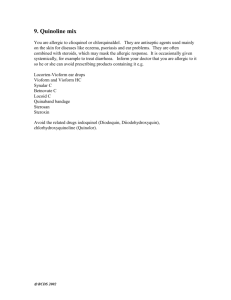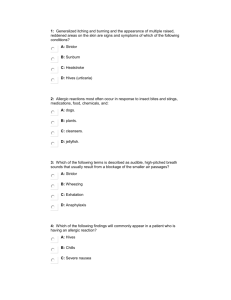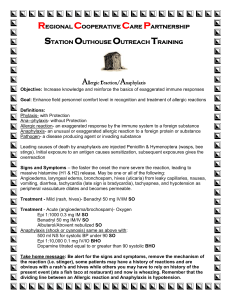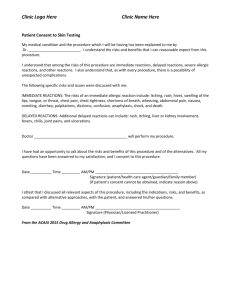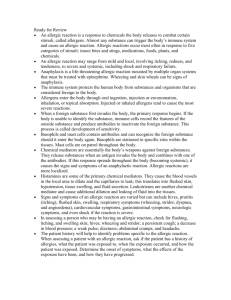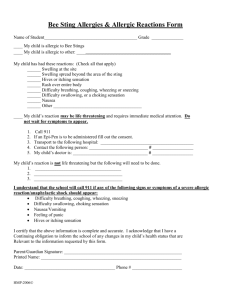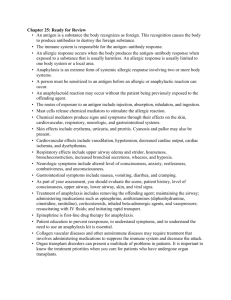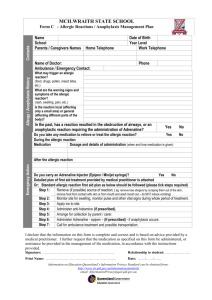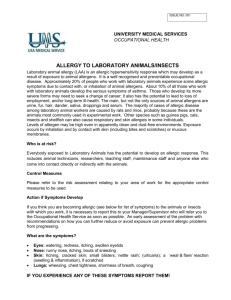Chapter 18: Immunologic Emergencies
advertisement
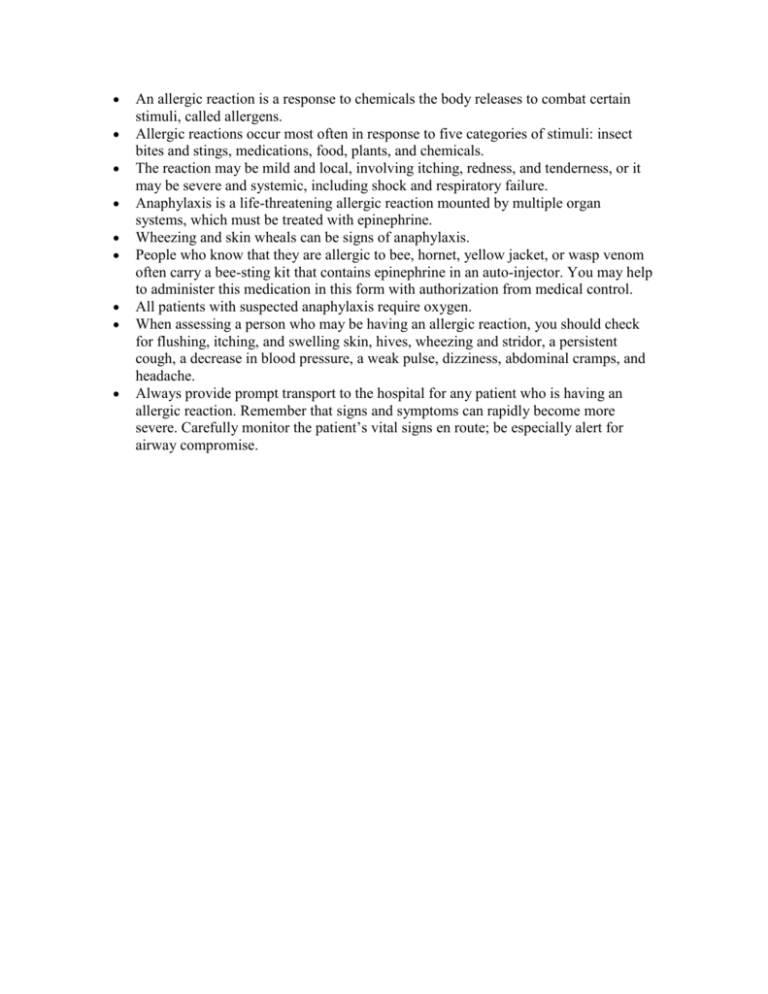
An allergic reaction is a response to chemicals the body releases to combat certain stimuli, called allergens. Allergic reactions occur most often in response to five categories of stimuli: insect bites and stings, medications, food, plants, and chemicals. The reaction may be mild and local, involving itching, redness, and tenderness, or it may be severe and systemic, including shock and respiratory failure. Anaphylaxis is a life-threatening allergic reaction mounted by multiple organ systems, which must be treated with epinephrine. Wheezing and skin wheals can be signs of anaphylaxis. People who know that they are allergic to bee, hornet, yellow jacket, or wasp venom often carry a bee-sting kit that contains epinephrine in an auto-injector. You may help to administer this medication in this form with authorization from medical control. All patients with suspected anaphylaxis require oxygen. When assessing a person who may be having an allergic reaction, you should check for flushing, itching, and swelling skin, hives, wheezing and stridor, a persistent cough, a decrease in blood pressure, a weak pulse, dizziness, abdominal cramps, and headache. Always provide prompt transport to the hospital for any patient who is having an allergic reaction. Remember that signs and symptoms can rapidly become more severe. Carefully monitor the patient’s vital signs en route; be especially alert for airway compromise.


